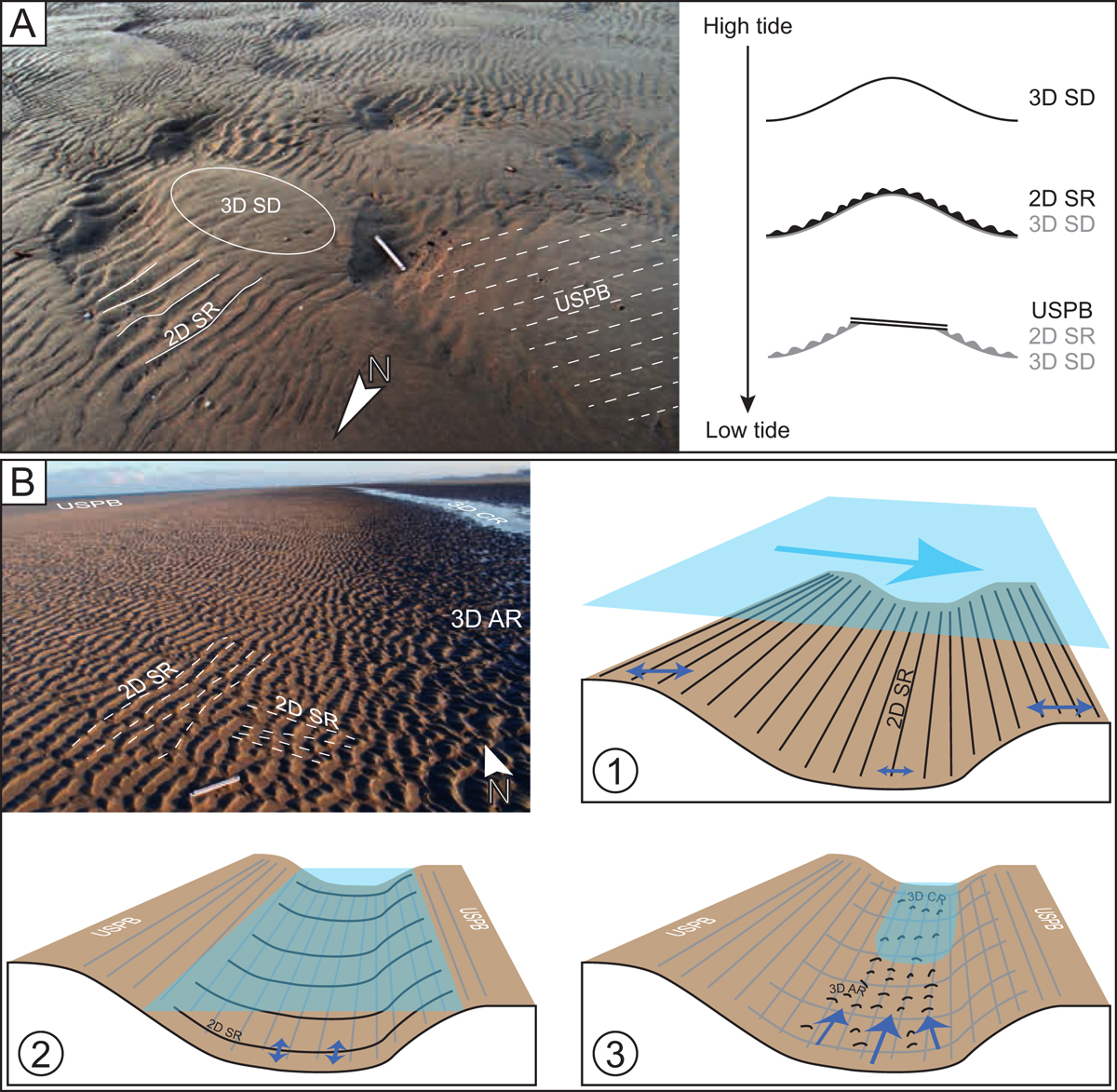Fig. 5

Download original image
(A) Bedform succession observed close to the shoreline of highest tide. 2D SR are mainly observed within the troughs of the 3D SD, and the USPB replace the hummocky part of the 3D SD. The 3D SD are generated during high tide and then, during falling tide, 2D SR are generated. Sea level continuing to fall, swash process and backwash process form USPB, flattening the zone and preserving the 2D SD within the trough of the 3D SD. (B) Bedforms occurring within a runnel. USPB is present on the ridge (top left corner) while 2D SD are observed on the slope of the runnel and 3D AR are limited to the central part of the runnel. 3D CR are not shown on the picture but occur under the small, still submerged zone. 2D SR showing an orientation parallel to the runnel are considered to be formed during high tide (1). Sea-level falling, the ridge is close to be exposed and USPB are formed on the top of the ridges (2). When the ridge is fully exposed, the runnel still allows wave propagation but now orthogonally to the shoreline. This explains how 2D SR is with crest aligned E-W (2). In (3), water is close to its lowest level and, during this step unidirectional tide current has increased, thus generating 3D AR and then 3D CR (when oscillatory process ceases).
Les statistiques affichées correspondent au cumul d'une part des vues des résumés de l'article et d'autre part des vues et téléchargements de l'article plein-texte (PDF, Full-HTML, ePub... selon les formats disponibles) sur la platefome Vision4Press.
Les statistiques sont disponibles avec un délai de 48 à 96 heures et sont mises à jour quotidiennement en semaine.
Le chargement des statistiques peut être long.




